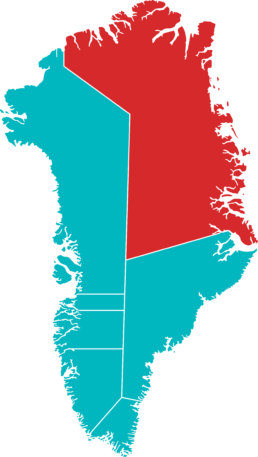The National Park
Greenland’s National Park is a remarkable example of unspoiled wilderness that has remained largely untouched by human activity. It is one of the few places on earth where wildlife, plants and landscapes remain unspoiled, and is one of the largest protected areas in the world. Covering an area of 972,000 km2, the park is almost the size of Spain and France combined, and is more than 100 times larger than Yellowstone National Park in the United States. It is hard to really comprehend how big the park is.
The park is uninhabited by people, with the exception of a few meteorological, research and military stations. These stations, including the headquarters of the elite unit Sirius Sled Patrol, are the only signs of human activity in the park. There is no infrastructure in the form of roads, harbors or commercial airports, and no hotels or guesthouses.
Access to the park is restricted, and visitors must obtain a permit from the Greenlandic authorities to enter. Only a handful of people live year-round in the park, and research stations are used primarily in late spring, summer and early autumn.
Wildlife thrives in the park due to a hunting ban that has been in place for several decades. However, the park’s location in the high arctic zone means that there are fewer animals and a lower diversity of animals compared to other national parks.
Established as a national park in 1974 and designated as a biosphere reserve under UNESCO’s Man and Biosphere program in 1977, the area is dedicated to preserving the natural state of the landscape, plant and animal habitats, and historical and archaeological sites while also promoting scientific research. The park enforces strict rules against the removal or disturbance of any objects, as well as a complete ban on hunting and fishing. However, the small local community of Ittoqqortoormiit, situated south of the park’s border, is permitted to enter the park for hunting musk oxen or polar bears, although this is not a common practice.
Additionally, the use of off-road motorcycles or any other type of motorized vehicle on land is strictly prohibited in the park. The primary goal of the park is to maintain the natural ecosystem while allowing for minimal human impact.




